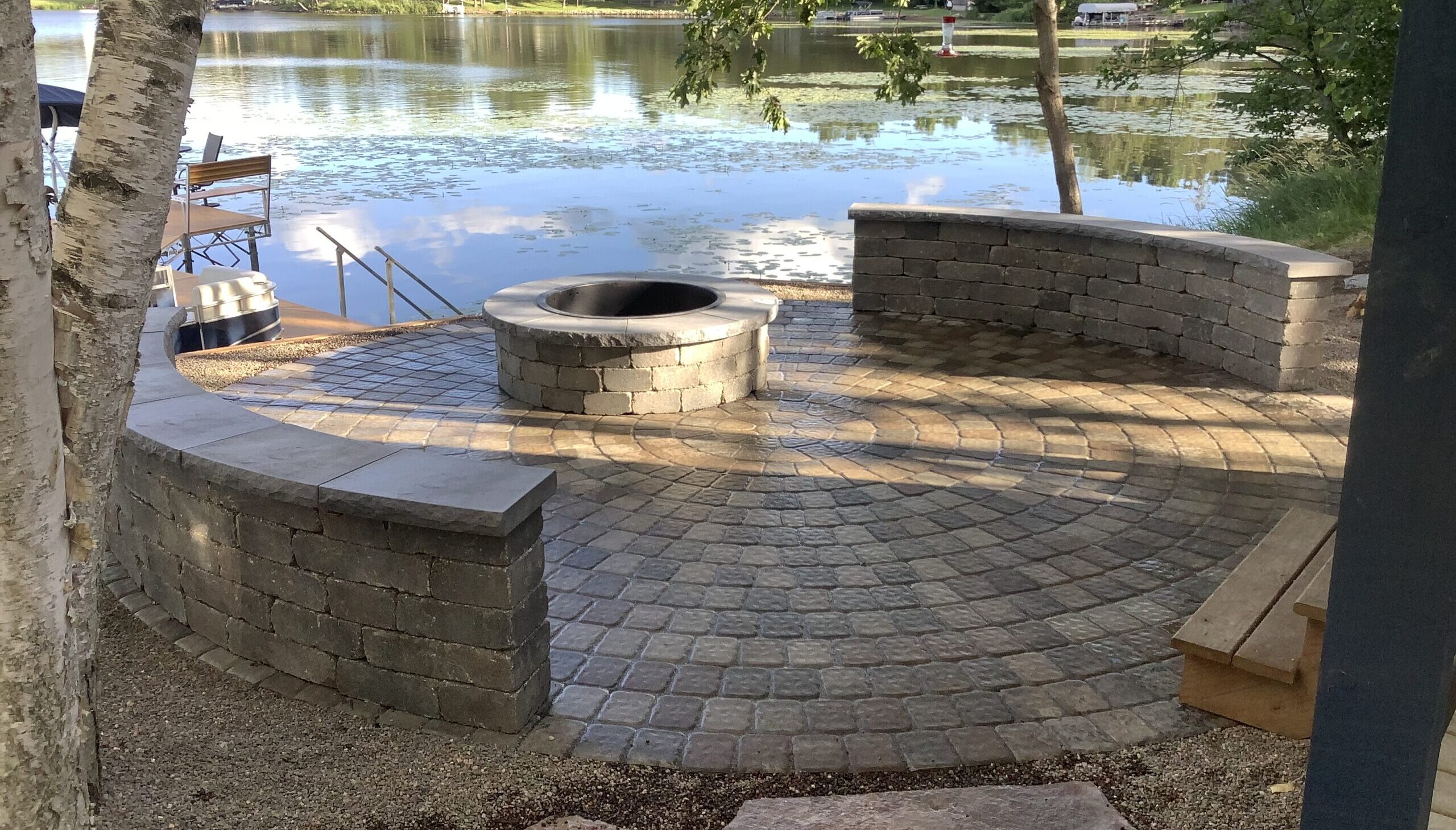Gathering around a fire evokes a deep connection to our ancestral roots, and all these millennia later, this simple act continues to create fond memories for families and friends. Despite the cozy quality, fire remains a force of nature that requires respect, especially in wooded areas like those found in Minnesota. Ensuring it’s safe and contained is paramount, especially when introduced to our personal spaces. Opting for a professionally installed backyard firepit is the ideal solution for long-term safety and enjoyment.
Backyard firepits, whether in-ground or raised, have always been a sought-after addition, elevating your outdoor entertainment options. During the pandemic, many households discovered the joy and solace a fire pit could bring while being confined at home, further boosting its popularity. It seems that nowadays requests for fire pit installations are more frequent than ever.

Raised or In-Ground Fire Pits – Which Is Better?
When clients ask us to install fire pits, we love it, because there are so many ways for you to customize the project. Most notably, you have to decide if you want an in-ground fire pit or one that’s raised above the surface, like the one we installed in the photo above. There isn’t a right or wrong answer, just different approaches to the experience and how you interact with the fire.
In-Ground Fire Pits
In-ground fire pits are appealing to many because they can blend into the surroundings a bit easier and they are more reminiscent of a traditional campfire or beach fire. Low-sitting at foot level and exposed, they require a sizable hole to be dug at a safe distance from the home, any other structures, and vegetation. But aside from that, we simply need to dig it to your desired circumference and go to a minimum depth of 18 inches. We can go deeper but just remember that with in-ground pits, you have to bend over that much further to maintain and clean them, so don’t go too deep.
Once the pit is dug, we install fire-rated materials to reinforce the shape and walls. This will be done with a steel campfire ring and stone pavers along the walls and floor that can withstand the heat they’ll be exposed to. If your fire pit is level with the surface, we can accent the upper ring with a variety of natural stones or refined paver options for the transition from the pit to the yard. This can provide you with a year-long campfire “rock ring” look.
Raised (Above-Ground) Fire Pits
Raised fire pits were traditionally seen around larger fires and in colder environments where people huddled up to the fire to warm up next to the roaring flames – like a ski lodge’s outdoor fire ring or a bonfire. The raised walls were meant to help keep the wood and embers from collapsing out of the designated area as more and more fuel was added to the fire over the course of a long night.
Like in-ground fire pits, we build and prepare the pit in the same way with the same fire-safe materials, however this time, we’re doing it on the ground’s surface so we won’t dig as deep. We still like to make a rather shallow indent for the base layer of floor material to keep it flush with the surrounding ground, but not 18 inches deep like before. However, we will be going up 16 to 20 inches in height! We can go higher, but this tends to be a good height for guests to (carefully) prop their feet or rest a s’mores stick while roasting marshmallows.
Keep in mind that with raised pits you get the added benefit of a new entertaining surface when the fire’s not active. We often hear of homeowners spending hours with friends using the capped stone walls of the pit as a type of drink or snack holder while they chat as they would at a wet bar at home.
Additional Considerations
Effective drainage is crucial for both in-ground and raised fire pits, as they naturally accumulate rainwater and melted snow. For in-ground designs, we ensure a substantial layer of pea gravel is added under the installation and we can incorporate French drains in the vicinity as needed. Similarly, raised pits will also benefit from the same pea gravel foundation, however, they’ll also have drainage holes strategically positioned along the pit walls for easy flow of water.
Think about your surrounding materials carefully and consider what your intended use of the space will be. Many homeowners opt for seating near their firepits, leading to the common installation of hard surfaces such as flagstone patios and pavers, or adaptable natural materials like pea gravel. Depending on the type of footing on your seating, one route may prove better for level and balance. For example, gravel easily allows independent feet to sink in nicely, but it would not be easy to offer the same balance to a chair where a hard surface would be more appropriate.
Don’t forget how retaining walls can also serve a secondary purpose as bench seating if you need both. We’ve incorporated both into shared spaces many times before and it can become a really effective use of the budget to get a lot of bang for the buck!
Contact Landscape Guys today to discuss your goals and get an estimate. We serve the entire Twin Cities area and beyond.

